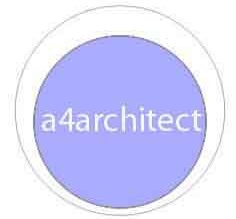Earth Architecture in Kenya.
Questions and Answers.
1. Is it true that mud houses are good at conserving heat and probably that’s why older people prefer to live in them?
Yes, earthen buildings have superior thermal qualities compared to most other building materials. Earthen houses are warm during the night and cool during the day, giving a very conducive living environment in the inside.
On he lowest scale of heat conservation is mabati houses which tend to be too hot during the day and too cold during the night.
2. Also would a sudden change in environment for instance from a mud house to a stone house affect these senior citizens (could this be the reason well wishers in Western Kenya opted to build the granny a mud house?)
Yes, a sudden change from a mud house to a stone house for an octogenarian who has lived in a mud house all their life will affect them as they try to acclimatize to the new environment.
Modern stone houses have some chemicals emitted from the materials used eg the wardrobes and furniture off gas formaldehyde, a known carcinogen.
3. What are the pros and cons of mud houses?
Mud houses have advantages such as lower cost of construction, perfect thermal capabilities and have very few hazardous chemicals used in their construction if any.
Their disadvantage is that they tend to have a very high maintenance cost, need regular repairing since the materials used are not as strong to withstand day to day use.
4. What factors make mud housing more efficient and sustainable than the houses we now live in?
Mud houses have a lower construction cost, have zero hazardous chemicals used in their construction materials and overall help to reduce the carbon footprint into the environment.
The USA and South America have re energized the use of earth as an architectural building component through earth bag housing technology.
Architect Nader Khalili of Cal earth institute in California has dedicated alot of resources in re introducing earth-bag houses into the USA and the rest of the world.
Architect Fernando Pacheco of Brazil has also revolutionized the use of earth bag technology in South America with his hyper adobe type of construction, surpassing Nader Khalilis super adobe method of construction.
5. Does Kenya have an existing building code that focus on the use of earth as a building material and looking at the current skyrocketing home prices is this a good time to evaluate this issue and perhaps encourage earthen architecture and construction of houses using mud?
Kenya’s building code does not incorporate earthen architecture though if well designed by an architect, and supported by a structural engineer’s drawings and calculation, any County Government planning department will approve of this type of construction.
With the USA ans South America spearheading the reintroduction of earthen architecture through earth bag technology, Kenyans and Africans in general will slowly embrace this even though in Africa and rural Kenya, earthen architecture is symbolic to poverty and quite shunned upon.
6. Across the world there has been this talk on sustainable development, climate change and environmental conservation that has in a way renewed interest in earthen architecture, seen as responsive to these three factors, do you think this is something the government and other stakeholders should think about?
Yes, earthen architecture goes a long way to conserve the environment and reduce carbon footprint into the atmosphere. With the rising cost of construction, earthen architecture provides a very good solution to affordable and quality housing t Kenyans.
Architect Francis Gichuhi kamau.
0721410684


Leave a Reply